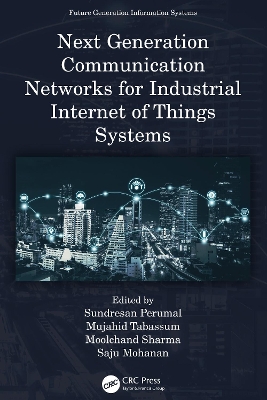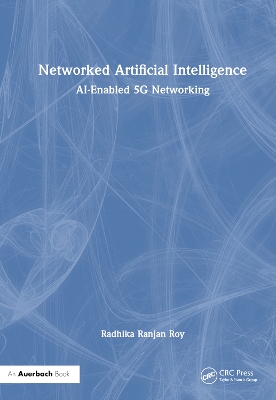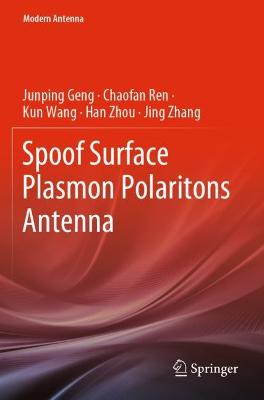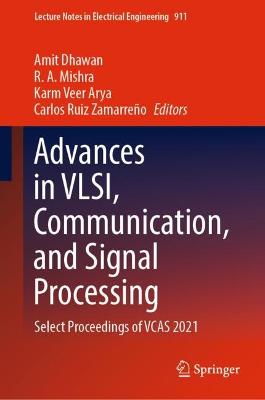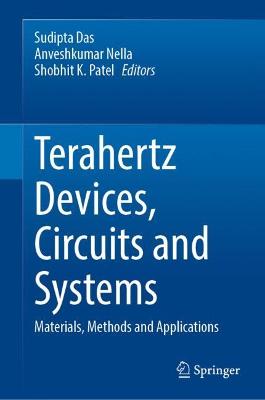Antennas and Propagation for Wireless Communication Systems
 portes grátis
portes grátis
Antennas and Propagation for Wireless Communication Systems
Aragon-Zavala, Alejandro A.; Saunders, Simon R.
John Wiley & Sons Inc
10/2024
752
Dura
9781394223046
Pré-lançamento - envio 15 a 20 dias após a sua edição
Descrição não disponível.
Preface xxiii
About the Companion Website xxvii
1 Introduction: The Wireless Communication Channel 1
1.1 Introduction 1
1.2 Concept of a Wireless Channel 1
1.3 The Electromagnetic Spectrum 5
1.4 Spectrum Management and Regulation 6
1.5 History 7
1.6 System Types 7
1.7 Aims of Cellular Systems 12
1.8 An Overview of Wireless Technologies 13
1.9 Multiple Access Schemes and Duplexing 32
1.10 The Mobile Broadband Revolution 35
1.11 Structure of This Book 37
1.12 Conclusion 38
2 Properties of Electromagnetic Waves 41
2.1 Introduction 41
2.2 Maxwell's Equations 41
2.3 Summary of Maxwell's Equations 44
2.4 The Wave Equation 44
2.5 Plane Wave Properties 45
2.6 Polarisation 50
2.7 Conclusion 52
3 Propagation Mechanisms 55
3.1 Introduction 55
3.2 Reflection, Refraction and Transmission 55
3.3 Rough Surface Scattering 63
3.4 Geometrical Optics 66
3.5 Diffraction 68
3.6 Conclusion 76
4 Antenna Fundamentals 79
4.1 Introduction 79
4.2 Principles 79
4.3 Antenna Parameters 83
4.4 Practical Dipoles 91
4.5 Antenna Arrays 95
4.6 Horn Antennas 99
4.7 Loop Antennas 100
4.8 Helical Antennas 101
4.9 Patch Antennas 101
4.10 Lens Antennas 102
4.11 Conclusion 104
5 Basic Propagation Models 109
5.1 Introduction 109
5.2 Definition of Path Loss 109
5.3 A Brief Note on Decibels 112
5.4 Noise Modelling 112
5.5 Free Space Loss 116
5.6 Plane Earth Loss 118
5.7 Link Budgets 120
5.8 Conclusion 122
6 Terrestrial Fixed Links 125
6.1 Introduction 125
6.2 Path Profiles 125
6.3 Tropospheric Refraction 128
6.4 Obstruction Loss 133
6.5 Approximate Multiple Knife-Edge Diffraction 135
6.6 The Multiple-Edge Diffraction Integral 140
6.7 Diffraction Over Objects of Finite Size 147
6.8 Other Methods for Predicting Terrain Diffraction 148
6.9 Propagation in Vegetation 153
6.10 Propagation in Tropical Environments 159
6.11 Antennas for Fixed Terrestrial Links 164
6.12 Conclusion 165
7 Satellite Fixed Links and High Altitude Platforms 171
7.1 Introduction 171
7.2 Tropospheric Effects 172
7.3 Ionospheric Effects 187
7.4 Satellite Earth Stations 191
7.5 High-altitude Platforms (HAPS) 195
7.6 Conclusion 201
8 Wide Area Coverage: Macrocells and Broadcasting 205
8.1 Introduction 205
8.2 Definition of Parameters 206
8.3 Empirical Path Loss Models 206
8.4 Physical Models 217
8.5 ITU-R Models 226
8.6 Hybrid Models -- Measurement-based Prediction (MbP) 228
8.7 Comparison of Models 230
8.8 Computerised Planning Tools 231
8.9 Cellular Base Station Site Engineering 231
8.10 Broadcasting Systems 242
8.11 Conclusion 246
9 Shadowing 251
9.1 Introduction 251
9.2 Statistical Characterisation 251
9.3 Physical Basis for Shadowing 252
9.4 Impact on Coverage 253
9.5 Location Variability 258
9.6 Correlated Shadowing 260
9.7 Conclusion 268
10 Narrowband Fast Fading 273
10.1 Introduction 273
10.2 Baseband Channel Representation 273
10.3 The AWGN Channel 274
10.4 The Narrowband Fading Channel 277
10.5 When Does Fading Occur in Practice? 278
10.6 The Rayleigh Distribution 279
10.7 Distribution of the SNR for a Rayleigh Channel 282
10.8 The Rice Distribution 285
10.9 The Nakagami-m Distribution 289
10.10 Other Fast-Fading Distributions 290
10.11 Second-Order Fast-Fading Statistics 292
10.12 Autocorrelation Function 299
10.13 Narrowband Mobile Radio Channel Simulations 302
10.14 Conclusion 302
11 Wideband Fast Fading 305
11.1 Introduction 305
11.2 Effect of Wideband Fading 306
11.3 Wideband Channel Model 309
11.4 Wideband Channel Parameters 310
11.5 Frequency Domain Effects 315
11.6 The Bello Functions 316
11.7 Wideband Fading in Fixed Links 317
11.8 Overcoming Wideband Channel Impairments 318
11.9 Conclusion 318
12 Microcells 321
12.1 Introduction 321
12.2 Empirical Models 322
12.3 Physical Models 332
12.4 Line-of-Sight Models 333
12.5 Non-Line-of-Sight Models 340
12.6 Discussion 346
12.7 Microcell Shadowing 346
12.8 Narrowband Fading 348
12.9 Wideband Effects 348
12.10 Conclusion 349
13 Picocells 353
13.1 Introduction 353
13.2 Empirical Models of Propagation Within Buildings 353
13.3 Physical Models of Indoor Propagation Within Buildings 365
13.4 Models of Propagation Into Buildings 372
13.5 Indoor-to-Outdoor (I2O) Propagation (Leakage) Models 381
13.6 Constitutive Parameters of Building Materials for Physical Models 383
13.7 Shadowing 384
13.8 Multipath Effects 384
13.9 Ultra-Wideband Indoor Propagation 387
13.10 Distribution Systems for Indoor and Enclosed Space Applications 388
13.11 Indoor Link Budgets 400
13.12 Conclusion 405
14 Propagation for Short-Range and Enclosed Space Applications 411
14.1 Introduction 411
14.2 Propagation in Tunnels 411
14.3 Wireless Communications for Trains 417
14.4 Propagation in Underground Mines 426
14.5 Propagation in Corridors 428
14.6 Propagation Within Lift Shafts 431
14.7 Vehicle-to-Vehicle (V2V) Communications 433
14.8 Conclusion 435
15 Megacells -- Non-terrestrial Networks 439
15.1 Introduction 439
15.2 Non-Terrestrial Mobile Networks 441
15.3 Shadowing and Fast Fading 443
15.4 Empirical Narrowband Models 445
15.5 Statistical Models 448
15.6 Shadowing Statistics 455
15.7 Physical-Statistical Models for Built-Up Areas 455
15.8 Wideband Models 463
15.9 Multi-Satellite Correlations 464
15.10 Overall Mobile Satellite Channel Model 465
15.11 Conclusion 466
16 Antenna Applications 471
16.1 Introduction 471
16.2 Mobile Terminal Antennas 471
16.3 Base Station Antennas 487
16.4 Antennas for Other Wireless Systems 499
16.5 Conclusion 507
17 Channel Measurements for Mobile Systems 513
17.1 Introduction 513
17.2 Applications for Channel Measurements 513
17.3 Impact of Measurement Inaccuracies 516
17.4 Signal Sampling Issues 517
17.5 Measurement Systems 523
17.6 Equipment Calibration and Validation 525
17.7 Outdoor Measurements 528
17.8 Indoor Measurements 533
17.9 Practical Experiment: Wi-Fi Measurements 538
17.10 Conclusion 540
18 Overcoming Narrowband Fading via Diversity 543
18.1 Introduction 543
18.2 Criteria for Useful Branches 545
18.3 Space Diversity 545
18.4 Polarisation Diversity 551
18.5 Time Diversity 554
18.6 Frequency Diversity 554
18.7 Combining Methods 555
18.8 Diversity for Microwave Links 562
18.9 Macrodiversity 562
18.10 Transmit Diversity 562
18.11 Conclusion 563
19 Overcoming Wideband Fading 565
19.1 Introduction 565
19.2 System Modelling 566
19.3 Linear Equalisers 568
19.4 Adaptive Equalisers 571
19.5 Non-Linear Equalisers 574
19.6 Rake Receivers 579
19.7 OFDM Receivers 582
19.8 Delay-Doppler Modulation: OTFS 586
19.9 Conclusion 588
20 Adaptive Antennas 591
20.1 Introduction 591
20.2 Basic Concepts 592
20.3 Adaptive Antenna Applications 593
20.4 Optimum Combining 598
20.5 Multiple-Input Multiple-Output Systems 605
20.6 Massive MIMO 614
20.7 MIMO Channel Modelling and Antennas 617
20.8 Summary of Adaptive Antenna Techniques 626
20.9 Conclusion 627
21 5G Mobile Networks 631
21.1 Introduction 631
21.2 5G Drivers and Standards Development 632
21.3 5G Frequency Bands 635
21.4 5G Air Interface Overview 638
21.5 MIMO in 5G 642
21.6 5G Mobile Propagation 648
21.7 5G Performance 657
21.8 5G Cell Planning 659
21.9 Conclusion 660
22 Future Antennas and Propagation: 6G and Beyond 663
22.1 Introduction 663
22.2 Beyond Shannon? 663
22.3 Expected Attributes and Candidate Technologies for 6G 664
22.4 Sensing 666
22.5 (Sub) Terahertz Mobile Propagation 667
22.6 Cell-Free Networks and Distributed MIMO 671
22.7 Full Duplex 672
22.8 Metamaterials and Reconfigurable Intelligent Surfaces 673
22.9 Machine Learning (ML) in Mobile Networks 674
22.10 Conclusion 680
References 681
Problems 682
Appendix A Statistics, Probability and Stochastic Processes 683
A.1 Introduction 683
A.2 Single Random Variables 683
A.3 Multiple Random Variables 684
A.4 Gaussian Distribution and Central Limit Theorem 684
A.5 Random Processes 685
Appendix B Tables and Data 687
B.1 Normal (Gaussian) Distribution 687
B.2 Error Function 687
B.3 Fresnel Integrals 690
B.4 Gamma Function 691
B.5 Bessel Function 692
Reference 693
Abbreviations 695
Index 701
About the Companion Website xxvii
1 Introduction: The Wireless Communication Channel 1
1.1 Introduction 1
1.2 Concept of a Wireless Channel 1
1.3 The Electromagnetic Spectrum 5
1.4 Spectrum Management and Regulation 6
1.5 History 7
1.6 System Types 7
1.7 Aims of Cellular Systems 12
1.8 An Overview of Wireless Technologies 13
1.9 Multiple Access Schemes and Duplexing 32
1.10 The Mobile Broadband Revolution 35
1.11 Structure of This Book 37
1.12 Conclusion 38
2 Properties of Electromagnetic Waves 41
2.1 Introduction 41
2.2 Maxwell's Equations 41
2.3 Summary of Maxwell's Equations 44
2.4 The Wave Equation 44
2.5 Plane Wave Properties 45
2.6 Polarisation 50
2.7 Conclusion 52
3 Propagation Mechanisms 55
3.1 Introduction 55
3.2 Reflection, Refraction and Transmission 55
3.3 Rough Surface Scattering 63
3.4 Geometrical Optics 66
3.5 Diffraction 68
3.6 Conclusion 76
4 Antenna Fundamentals 79
4.1 Introduction 79
4.2 Principles 79
4.3 Antenna Parameters 83
4.4 Practical Dipoles 91
4.5 Antenna Arrays 95
4.6 Horn Antennas 99
4.7 Loop Antennas 100
4.8 Helical Antennas 101
4.9 Patch Antennas 101
4.10 Lens Antennas 102
4.11 Conclusion 104
5 Basic Propagation Models 109
5.1 Introduction 109
5.2 Definition of Path Loss 109
5.3 A Brief Note on Decibels 112
5.4 Noise Modelling 112
5.5 Free Space Loss 116
5.6 Plane Earth Loss 118
5.7 Link Budgets 120
5.8 Conclusion 122
6 Terrestrial Fixed Links 125
6.1 Introduction 125
6.2 Path Profiles 125
6.3 Tropospheric Refraction 128
6.4 Obstruction Loss 133
6.5 Approximate Multiple Knife-Edge Diffraction 135
6.6 The Multiple-Edge Diffraction Integral 140
6.7 Diffraction Over Objects of Finite Size 147
6.8 Other Methods for Predicting Terrain Diffraction 148
6.9 Propagation in Vegetation 153
6.10 Propagation in Tropical Environments 159
6.11 Antennas for Fixed Terrestrial Links 164
6.12 Conclusion 165
7 Satellite Fixed Links and High Altitude Platforms 171
7.1 Introduction 171
7.2 Tropospheric Effects 172
7.3 Ionospheric Effects 187
7.4 Satellite Earth Stations 191
7.5 High-altitude Platforms (HAPS) 195
7.6 Conclusion 201
8 Wide Area Coverage: Macrocells and Broadcasting 205
8.1 Introduction 205
8.2 Definition of Parameters 206
8.3 Empirical Path Loss Models 206
8.4 Physical Models 217
8.5 ITU-R Models 226
8.6 Hybrid Models -- Measurement-based Prediction (MbP) 228
8.7 Comparison of Models 230
8.8 Computerised Planning Tools 231
8.9 Cellular Base Station Site Engineering 231
8.10 Broadcasting Systems 242
8.11 Conclusion 246
9 Shadowing 251
9.1 Introduction 251
9.2 Statistical Characterisation 251
9.3 Physical Basis for Shadowing 252
9.4 Impact on Coverage 253
9.5 Location Variability 258
9.6 Correlated Shadowing 260
9.7 Conclusion 268
10 Narrowband Fast Fading 273
10.1 Introduction 273
10.2 Baseband Channel Representation 273
10.3 The AWGN Channel 274
10.4 The Narrowband Fading Channel 277
10.5 When Does Fading Occur in Practice? 278
10.6 The Rayleigh Distribution 279
10.7 Distribution of the SNR for a Rayleigh Channel 282
10.8 The Rice Distribution 285
10.9 The Nakagami-m Distribution 289
10.10 Other Fast-Fading Distributions 290
10.11 Second-Order Fast-Fading Statistics 292
10.12 Autocorrelation Function 299
10.13 Narrowband Mobile Radio Channel Simulations 302
10.14 Conclusion 302
11 Wideband Fast Fading 305
11.1 Introduction 305
11.2 Effect of Wideband Fading 306
11.3 Wideband Channel Model 309
11.4 Wideband Channel Parameters 310
11.5 Frequency Domain Effects 315
11.6 The Bello Functions 316
11.7 Wideband Fading in Fixed Links 317
11.8 Overcoming Wideband Channel Impairments 318
11.9 Conclusion 318
12 Microcells 321
12.1 Introduction 321
12.2 Empirical Models 322
12.3 Physical Models 332
12.4 Line-of-Sight Models 333
12.5 Non-Line-of-Sight Models 340
12.6 Discussion 346
12.7 Microcell Shadowing 346
12.8 Narrowband Fading 348
12.9 Wideband Effects 348
12.10 Conclusion 349
13 Picocells 353
13.1 Introduction 353
13.2 Empirical Models of Propagation Within Buildings 353
13.3 Physical Models of Indoor Propagation Within Buildings 365
13.4 Models of Propagation Into Buildings 372
13.5 Indoor-to-Outdoor (I2O) Propagation (Leakage) Models 381
13.6 Constitutive Parameters of Building Materials for Physical Models 383
13.7 Shadowing 384
13.8 Multipath Effects 384
13.9 Ultra-Wideband Indoor Propagation 387
13.10 Distribution Systems for Indoor and Enclosed Space Applications 388
13.11 Indoor Link Budgets 400
13.12 Conclusion 405
14 Propagation for Short-Range and Enclosed Space Applications 411
14.1 Introduction 411
14.2 Propagation in Tunnels 411
14.3 Wireless Communications for Trains 417
14.4 Propagation in Underground Mines 426
14.5 Propagation in Corridors 428
14.6 Propagation Within Lift Shafts 431
14.7 Vehicle-to-Vehicle (V2V) Communications 433
14.8 Conclusion 435
15 Megacells -- Non-terrestrial Networks 439
15.1 Introduction 439
15.2 Non-Terrestrial Mobile Networks 441
15.3 Shadowing and Fast Fading 443
15.4 Empirical Narrowband Models 445
15.5 Statistical Models 448
15.6 Shadowing Statistics 455
15.7 Physical-Statistical Models for Built-Up Areas 455
15.8 Wideband Models 463
15.9 Multi-Satellite Correlations 464
15.10 Overall Mobile Satellite Channel Model 465
15.11 Conclusion 466
16 Antenna Applications 471
16.1 Introduction 471
16.2 Mobile Terminal Antennas 471
16.3 Base Station Antennas 487
16.4 Antennas for Other Wireless Systems 499
16.5 Conclusion 507
17 Channel Measurements for Mobile Systems 513
17.1 Introduction 513
17.2 Applications for Channel Measurements 513
17.3 Impact of Measurement Inaccuracies 516
17.4 Signal Sampling Issues 517
17.5 Measurement Systems 523
17.6 Equipment Calibration and Validation 525
17.7 Outdoor Measurements 528
17.8 Indoor Measurements 533
17.9 Practical Experiment: Wi-Fi Measurements 538
17.10 Conclusion 540
18 Overcoming Narrowband Fading via Diversity 543
18.1 Introduction 543
18.2 Criteria for Useful Branches 545
18.3 Space Diversity 545
18.4 Polarisation Diversity 551
18.5 Time Diversity 554
18.6 Frequency Diversity 554
18.7 Combining Methods 555
18.8 Diversity for Microwave Links 562
18.9 Macrodiversity 562
18.10 Transmit Diversity 562
18.11 Conclusion 563
19 Overcoming Wideband Fading 565
19.1 Introduction 565
19.2 System Modelling 566
19.3 Linear Equalisers 568
19.4 Adaptive Equalisers 571
19.5 Non-Linear Equalisers 574
19.6 Rake Receivers 579
19.7 OFDM Receivers 582
19.8 Delay-Doppler Modulation: OTFS 586
19.9 Conclusion 588
20 Adaptive Antennas 591
20.1 Introduction 591
20.2 Basic Concepts 592
20.3 Adaptive Antenna Applications 593
20.4 Optimum Combining 598
20.5 Multiple-Input Multiple-Output Systems 605
20.6 Massive MIMO 614
20.7 MIMO Channel Modelling and Antennas 617
20.8 Summary of Adaptive Antenna Techniques 626
20.9 Conclusion 627
21 5G Mobile Networks 631
21.1 Introduction 631
21.2 5G Drivers and Standards Development 632
21.3 5G Frequency Bands 635
21.4 5G Air Interface Overview 638
21.5 MIMO in 5G 642
21.6 5G Mobile Propagation 648
21.7 5G Performance 657
21.8 5G Cell Planning 659
21.9 Conclusion 660
22 Future Antennas and Propagation: 6G and Beyond 663
22.1 Introduction 663
22.2 Beyond Shannon? 663
22.3 Expected Attributes and Candidate Technologies for 6G 664
22.4 Sensing 666
22.5 (Sub) Terahertz Mobile Propagation 667
22.6 Cell-Free Networks and Distributed MIMO 671
22.7 Full Duplex 672
22.8 Metamaterials and Reconfigurable Intelligent Surfaces 673
22.9 Machine Learning (ML) in Mobile Networks 674
22.10 Conclusion 680
References 681
Problems 682
Appendix A Statistics, Probability and Stochastic Processes 683
A.1 Introduction 683
A.2 Single Random Variables 683
A.3 Multiple Random Variables 684
A.4 Gaussian Distribution and Central Limit Theorem 684
A.5 Random Processes 685
Appendix B Tables and Data 687
B.1 Normal (Gaussian) Distribution 687
B.2 Error Function 687
B.3 Fresnel Integrals 690
B.4 Gamma Function 691
B.5 Bessel Function 692
Reference 693
Abbreviations 695
Index 701
Este título pertence ao(s) assunto(s) indicados(s). Para ver outros títulos clique no assunto desejado.
communication system performance; propagation measurement; propagation modelling; propagation prediction; fixed links; macrocells; microcells; picocells; megacells; femtocells; diversity; narrowband channel modelling; wideband channel modelling; channel impairments; MIMO; 4G; 5G; 6G; antennas
Preface xxiii
About the Companion Website xxvii
1 Introduction: The Wireless Communication Channel 1
1.1 Introduction 1
1.2 Concept of a Wireless Channel 1
1.3 The Electromagnetic Spectrum 5
1.4 Spectrum Management and Regulation 6
1.5 History 7
1.6 System Types 7
1.7 Aims of Cellular Systems 12
1.8 An Overview of Wireless Technologies 13
1.9 Multiple Access Schemes and Duplexing 32
1.10 The Mobile Broadband Revolution 35
1.11 Structure of This Book 37
1.12 Conclusion 38
2 Properties of Electromagnetic Waves 41
2.1 Introduction 41
2.2 Maxwell's Equations 41
2.3 Summary of Maxwell's Equations 44
2.4 The Wave Equation 44
2.5 Plane Wave Properties 45
2.6 Polarisation 50
2.7 Conclusion 52
3 Propagation Mechanisms 55
3.1 Introduction 55
3.2 Reflection, Refraction and Transmission 55
3.3 Rough Surface Scattering 63
3.4 Geometrical Optics 66
3.5 Diffraction 68
3.6 Conclusion 76
4 Antenna Fundamentals 79
4.1 Introduction 79
4.2 Principles 79
4.3 Antenna Parameters 83
4.4 Practical Dipoles 91
4.5 Antenna Arrays 95
4.6 Horn Antennas 99
4.7 Loop Antennas 100
4.8 Helical Antennas 101
4.9 Patch Antennas 101
4.10 Lens Antennas 102
4.11 Conclusion 104
5 Basic Propagation Models 109
5.1 Introduction 109
5.2 Definition of Path Loss 109
5.3 A Brief Note on Decibels 112
5.4 Noise Modelling 112
5.5 Free Space Loss 116
5.6 Plane Earth Loss 118
5.7 Link Budgets 120
5.8 Conclusion 122
6 Terrestrial Fixed Links 125
6.1 Introduction 125
6.2 Path Profiles 125
6.3 Tropospheric Refraction 128
6.4 Obstruction Loss 133
6.5 Approximate Multiple Knife-Edge Diffraction 135
6.6 The Multiple-Edge Diffraction Integral 140
6.7 Diffraction Over Objects of Finite Size 147
6.8 Other Methods for Predicting Terrain Diffraction 148
6.9 Propagation in Vegetation 153
6.10 Propagation in Tropical Environments 159
6.11 Antennas for Fixed Terrestrial Links 164
6.12 Conclusion 165
7 Satellite Fixed Links and High Altitude Platforms 171
7.1 Introduction 171
7.2 Tropospheric Effects 172
7.3 Ionospheric Effects 187
7.4 Satellite Earth Stations 191
7.5 High-altitude Platforms (HAPS) 195
7.6 Conclusion 201
8 Wide Area Coverage: Macrocells and Broadcasting 205
8.1 Introduction 205
8.2 Definition of Parameters 206
8.3 Empirical Path Loss Models 206
8.4 Physical Models 217
8.5 ITU-R Models 226
8.6 Hybrid Models -- Measurement-based Prediction (MbP) 228
8.7 Comparison of Models 230
8.8 Computerised Planning Tools 231
8.9 Cellular Base Station Site Engineering 231
8.10 Broadcasting Systems 242
8.11 Conclusion 246
9 Shadowing 251
9.1 Introduction 251
9.2 Statistical Characterisation 251
9.3 Physical Basis for Shadowing 252
9.4 Impact on Coverage 253
9.5 Location Variability 258
9.6 Correlated Shadowing 260
9.7 Conclusion 268
10 Narrowband Fast Fading 273
10.1 Introduction 273
10.2 Baseband Channel Representation 273
10.3 The AWGN Channel 274
10.4 The Narrowband Fading Channel 277
10.5 When Does Fading Occur in Practice? 278
10.6 The Rayleigh Distribution 279
10.7 Distribution of the SNR for a Rayleigh Channel 282
10.8 The Rice Distribution 285
10.9 The Nakagami-m Distribution 289
10.10 Other Fast-Fading Distributions 290
10.11 Second-Order Fast-Fading Statistics 292
10.12 Autocorrelation Function 299
10.13 Narrowband Mobile Radio Channel Simulations 302
10.14 Conclusion 302
11 Wideband Fast Fading 305
11.1 Introduction 305
11.2 Effect of Wideband Fading 306
11.3 Wideband Channel Model 309
11.4 Wideband Channel Parameters 310
11.5 Frequency Domain Effects 315
11.6 The Bello Functions 316
11.7 Wideband Fading in Fixed Links 317
11.8 Overcoming Wideband Channel Impairments 318
11.9 Conclusion 318
12 Microcells 321
12.1 Introduction 321
12.2 Empirical Models 322
12.3 Physical Models 332
12.4 Line-of-Sight Models 333
12.5 Non-Line-of-Sight Models 340
12.6 Discussion 346
12.7 Microcell Shadowing 346
12.8 Narrowband Fading 348
12.9 Wideband Effects 348
12.10 Conclusion 349
13 Picocells 353
13.1 Introduction 353
13.2 Empirical Models of Propagation Within Buildings 353
13.3 Physical Models of Indoor Propagation Within Buildings 365
13.4 Models of Propagation Into Buildings 372
13.5 Indoor-to-Outdoor (I2O) Propagation (Leakage) Models 381
13.6 Constitutive Parameters of Building Materials for Physical Models 383
13.7 Shadowing 384
13.8 Multipath Effects 384
13.9 Ultra-Wideband Indoor Propagation 387
13.10 Distribution Systems for Indoor and Enclosed Space Applications 388
13.11 Indoor Link Budgets 400
13.12 Conclusion 405
14 Propagation for Short-Range and Enclosed Space Applications 411
14.1 Introduction 411
14.2 Propagation in Tunnels 411
14.3 Wireless Communications for Trains 417
14.4 Propagation in Underground Mines 426
14.5 Propagation in Corridors 428
14.6 Propagation Within Lift Shafts 431
14.7 Vehicle-to-Vehicle (V2V) Communications 433
14.8 Conclusion 435
15 Megacells -- Non-terrestrial Networks 439
15.1 Introduction 439
15.2 Non-Terrestrial Mobile Networks 441
15.3 Shadowing and Fast Fading 443
15.4 Empirical Narrowband Models 445
15.5 Statistical Models 448
15.6 Shadowing Statistics 455
15.7 Physical-Statistical Models for Built-Up Areas 455
15.8 Wideband Models 463
15.9 Multi-Satellite Correlations 464
15.10 Overall Mobile Satellite Channel Model 465
15.11 Conclusion 466
16 Antenna Applications 471
16.1 Introduction 471
16.2 Mobile Terminal Antennas 471
16.3 Base Station Antennas 487
16.4 Antennas for Other Wireless Systems 499
16.5 Conclusion 507
17 Channel Measurements for Mobile Systems 513
17.1 Introduction 513
17.2 Applications for Channel Measurements 513
17.3 Impact of Measurement Inaccuracies 516
17.4 Signal Sampling Issues 517
17.5 Measurement Systems 523
17.6 Equipment Calibration and Validation 525
17.7 Outdoor Measurements 528
17.8 Indoor Measurements 533
17.9 Practical Experiment: Wi-Fi Measurements 538
17.10 Conclusion 540
18 Overcoming Narrowband Fading via Diversity 543
18.1 Introduction 543
18.2 Criteria for Useful Branches 545
18.3 Space Diversity 545
18.4 Polarisation Diversity 551
18.5 Time Diversity 554
18.6 Frequency Diversity 554
18.7 Combining Methods 555
18.8 Diversity for Microwave Links 562
18.9 Macrodiversity 562
18.10 Transmit Diversity 562
18.11 Conclusion 563
19 Overcoming Wideband Fading 565
19.1 Introduction 565
19.2 System Modelling 566
19.3 Linear Equalisers 568
19.4 Adaptive Equalisers 571
19.5 Non-Linear Equalisers 574
19.6 Rake Receivers 579
19.7 OFDM Receivers 582
19.8 Delay-Doppler Modulation: OTFS 586
19.9 Conclusion 588
20 Adaptive Antennas 591
20.1 Introduction 591
20.2 Basic Concepts 592
20.3 Adaptive Antenna Applications 593
20.4 Optimum Combining 598
20.5 Multiple-Input Multiple-Output Systems 605
20.6 Massive MIMO 614
20.7 MIMO Channel Modelling and Antennas 617
20.8 Summary of Adaptive Antenna Techniques 626
20.9 Conclusion 627
21 5G Mobile Networks 631
21.1 Introduction 631
21.2 5G Drivers and Standards Development 632
21.3 5G Frequency Bands 635
21.4 5G Air Interface Overview 638
21.5 MIMO in 5G 642
21.6 5G Mobile Propagation 648
21.7 5G Performance 657
21.8 5G Cell Planning 659
21.9 Conclusion 660
22 Future Antennas and Propagation: 6G and Beyond 663
22.1 Introduction 663
22.2 Beyond Shannon? 663
22.3 Expected Attributes and Candidate Technologies for 6G 664
22.4 Sensing 666
22.5 (Sub) Terahertz Mobile Propagation 667
22.6 Cell-Free Networks and Distributed MIMO 671
22.7 Full Duplex 672
22.8 Metamaterials and Reconfigurable Intelligent Surfaces 673
22.9 Machine Learning (ML) in Mobile Networks 674
22.10 Conclusion 680
References 681
Problems 682
Appendix A Statistics, Probability and Stochastic Processes 683
A.1 Introduction 683
A.2 Single Random Variables 683
A.3 Multiple Random Variables 684
A.4 Gaussian Distribution and Central Limit Theorem 684
A.5 Random Processes 685
Appendix B Tables and Data 687
B.1 Normal (Gaussian) Distribution 687
B.2 Error Function 687
B.3 Fresnel Integrals 690
B.4 Gamma Function 691
B.5 Bessel Function 692
Reference 693
Abbreviations 695
Index 701
About the Companion Website xxvii
1 Introduction: The Wireless Communication Channel 1
1.1 Introduction 1
1.2 Concept of a Wireless Channel 1
1.3 The Electromagnetic Spectrum 5
1.4 Spectrum Management and Regulation 6
1.5 History 7
1.6 System Types 7
1.7 Aims of Cellular Systems 12
1.8 An Overview of Wireless Technologies 13
1.9 Multiple Access Schemes and Duplexing 32
1.10 The Mobile Broadband Revolution 35
1.11 Structure of This Book 37
1.12 Conclusion 38
2 Properties of Electromagnetic Waves 41
2.1 Introduction 41
2.2 Maxwell's Equations 41
2.3 Summary of Maxwell's Equations 44
2.4 The Wave Equation 44
2.5 Plane Wave Properties 45
2.6 Polarisation 50
2.7 Conclusion 52
3 Propagation Mechanisms 55
3.1 Introduction 55
3.2 Reflection, Refraction and Transmission 55
3.3 Rough Surface Scattering 63
3.4 Geometrical Optics 66
3.5 Diffraction 68
3.6 Conclusion 76
4 Antenna Fundamentals 79
4.1 Introduction 79
4.2 Principles 79
4.3 Antenna Parameters 83
4.4 Practical Dipoles 91
4.5 Antenna Arrays 95
4.6 Horn Antennas 99
4.7 Loop Antennas 100
4.8 Helical Antennas 101
4.9 Patch Antennas 101
4.10 Lens Antennas 102
4.11 Conclusion 104
5 Basic Propagation Models 109
5.1 Introduction 109
5.2 Definition of Path Loss 109
5.3 A Brief Note on Decibels 112
5.4 Noise Modelling 112
5.5 Free Space Loss 116
5.6 Plane Earth Loss 118
5.7 Link Budgets 120
5.8 Conclusion 122
6 Terrestrial Fixed Links 125
6.1 Introduction 125
6.2 Path Profiles 125
6.3 Tropospheric Refraction 128
6.4 Obstruction Loss 133
6.5 Approximate Multiple Knife-Edge Diffraction 135
6.6 The Multiple-Edge Diffraction Integral 140
6.7 Diffraction Over Objects of Finite Size 147
6.8 Other Methods for Predicting Terrain Diffraction 148
6.9 Propagation in Vegetation 153
6.10 Propagation in Tropical Environments 159
6.11 Antennas for Fixed Terrestrial Links 164
6.12 Conclusion 165
7 Satellite Fixed Links and High Altitude Platforms 171
7.1 Introduction 171
7.2 Tropospheric Effects 172
7.3 Ionospheric Effects 187
7.4 Satellite Earth Stations 191
7.5 High-altitude Platforms (HAPS) 195
7.6 Conclusion 201
8 Wide Area Coverage: Macrocells and Broadcasting 205
8.1 Introduction 205
8.2 Definition of Parameters 206
8.3 Empirical Path Loss Models 206
8.4 Physical Models 217
8.5 ITU-R Models 226
8.6 Hybrid Models -- Measurement-based Prediction (MbP) 228
8.7 Comparison of Models 230
8.8 Computerised Planning Tools 231
8.9 Cellular Base Station Site Engineering 231
8.10 Broadcasting Systems 242
8.11 Conclusion 246
9 Shadowing 251
9.1 Introduction 251
9.2 Statistical Characterisation 251
9.3 Physical Basis for Shadowing 252
9.4 Impact on Coverage 253
9.5 Location Variability 258
9.6 Correlated Shadowing 260
9.7 Conclusion 268
10 Narrowband Fast Fading 273
10.1 Introduction 273
10.2 Baseband Channel Representation 273
10.3 The AWGN Channel 274
10.4 The Narrowband Fading Channel 277
10.5 When Does Fading Occur in Practice? 278
10.6 The Rayleigh Distribution 279
10.7 Distribution of the SNR for a Rayleigh Channel 282
10.8 The Rice Distribution 285
10.9 The Nakagami-m Distribution 289
10.10 Other Fast-Fading Distributions 290
10.11 Second-Order Fast-Fading Statistics 292
10.12 Autocorrelation Function 299
10.13 Narrowband Mobile Radio Channel Simulations 302
10.14 Conclusion 302
11 Wideband Fast Fading 305
11.1 Introduction 305
11.2 Effect of Wideband Fading 306
11.3 Wideband Channel Model 309
11.4 Wideband Channel Parameters 310
11.5 Frequency Domain Effects 315
11.6 The Bello Functions 316
11.7 Wideband Fading in Fixed Links 317
11.8 Overcoming Wideband Channel Impairments 318
11.9 Conclusion 318
12 Microcells 321
12.1 Introduction 321
12.2 Empirical Models 322
12.3 Physical Models 332
12.4 Line-of-Sight Models 333
12.5 Non-Line-of-Sight Models 340
12.6 Discussion 346
12.7 Microcell Shadowing 346
12.8 Narrowband Fading 348
12.9 Wideband Effects 348
12.10 Conclusion 349
13 Picocells 353
13.1 Introduction 353
13.2 Empirical Models of Propagation Within Buildings 353
13.3 Physical Models of Indoor Propagation Within Buildings 365
13.4 Models of Propagation Into Buildings 372
13.5 Indoor-to-Outdoor (I2O) Propagation (Leakage) Models 381
13.6 Constitutive Parameters of Building Materials for Physical Models 383
13.7 Shadowing 384
13.8 Multipath Effects 384
13.9 Ultra-Wideband Indoor Propagation 387
13.10 Distribution Systems for Indoor and Enclosed Space Applications 388
13.11 Indoor Link Budgets 400
13.12 Conclusion 405
14 Propagation for Short-Range and Enclosed Space Applications 411
14.1 Introduction 411
14.2 Propagation in Tunnels 411
14.3 Wireless Communications for Trains 417
14.4 Propagation in Underground Mines 426
14.5 Propagation in Corridors 428
14.6 Propagation Within Lift Shafts 431
14.7 Vehicle-to-Vehicle (V2V) Communications 433
14.8 Conclusion 435
15 Megacells -- Non-terrestrial Networks 439
15.1 Introduction 439
15.2 Non-Terrestrial Mobile Networks 441
15.3 Shadowing and Fast Fading 443
15.4 Empirical Narrowband Models 445
15.5 Statistical Models 448
15.6 Shadowing Statistics 455
15.7 Physical-Statistical Models for Built-Up Areas 455
15.8 Wideband Models 463
15.9 Multi-Satellite Correlations 464
15.10 Overall Mobile Satellite Channel Model 465
15.11 Conclusion 466
16 Antenna Applications 471
16.1 Introduction 471
16.2 Mobile Terminal Antennas 471
16.3 Base Station Antennas 487
16.4 Antennas for Other Wireless Systems 499
16.5 Conclusion 507
17 Channel Measurements for Mobile Systems 513
17.1 Introduction 513
17.2 Applications for Channel Measurements 513
17.3 Impact of Measurement Inaccuracies 516
17.4 Signal Sampling Issues 517
17.5 Measurement Systems 523
17.6 Equipment Calibration and Validation 525
17.7 Outdoor Measurements 528
17.8 Indoor Measurements 533
17.9 Practical Experiment: Wi-Fi Measurements 538
17.10 Conclusion 540
18 Overcoming Narrowband Fading via Diversity 543
18.1 Introduction 543
18.2 Criteria for Useful Branches 545
18.3 Space Diversity 545
18.4 Polarisation Diversity 551
18.5 Time Diversity 554
18.6 Frequency Diversity 554
18.7 Combining Methods 555
18.8 Diversity for Microwave Links 562
18.9 Macrodiversity 562
18.10 Transmit Diversity 562
18.11 Conclusion 563
19 Overcoming Wideband Fading 565
19.1 Introduction 565
19.2 System Modelling 566
19.3 Linear Equalisers 568
19.4 Adaptive Equalisers 571
19.5 Non-Linear Equalisers 574
19.6 Rake Receivers 579
19.7 OFDM Receivers 582
19.8 Delay-Doppler Modulation: OTFS 586
19.9 Conclusion 588
20 Adaptive Antennas 591
20.1 Introduction 591
20.2 Basic Concepts 592
20.3 Adaptive Antenna Applications 593
20.4 Optimum Combining 598
20.5 Multiple-Input Multiple-Output Systems 605
20.6 Massive MIMO 614
20.7 MIMO Channel Modelling and Antennas 617
20.8 Summary of Adaptive Antenna Techniques 626
20.9 Conclusion 627
21 5G Mobile Networks 631
21.1 Introduction 631
21.2 5G Drivers and Standards Development 632
21.3 5G Frequency Bands 635
21.4 5G Air Interface Overview 638
21.5 MIMO in 5G 642
21.6 5G Mobile Propagation 648
21.7 5G Performance 657
21.8 5G Cell Planning 659
21.9 Conclusion 660
22 Future Antennas and Propagation: 6G and Beyond 663
22.1 Introduction 663
22.2 Beyond Shannon? 663
22.3 Expected Attributes and Candidate Technologies for 6G 664
22.4 Sensing 666
22.5 (Sub) Terahertz Mobile Propagation 667
22.6 Cell-Free Networks and Distributed MIMO 671
22.7 Full Duplex 672
22.8 Metamaterials and Reconfigurable Intelligent Surfaces 673
22.9 Machine Learning (ML) in Mobile Networks 674
22.10 Conclusion 680
References 681
Problems 682
Appendix A Statistics, Probability and Stochastic Processes 683
A.1 Introduction 683
A.2 Single Random Variables 683
A.3 Multiple Random Variables 684
A.4 Gaussian Distribution and Central Limit Theorem 684
A.5 Random Processes 685
Appendix B Tables and Data 687
B.1 Normal (Gaussian) Distribution 687
B.2 Error Function 687
B.3 Fresnel Integrals 690
B.4 Gamma Function 691
B.5 Bessel Function 692
Reference 693
Abbreviations 695
Index 701
Este título pertence ao(s) assunto(s) indicados(s). Para ver outros títulos clique no assunto desejado.

